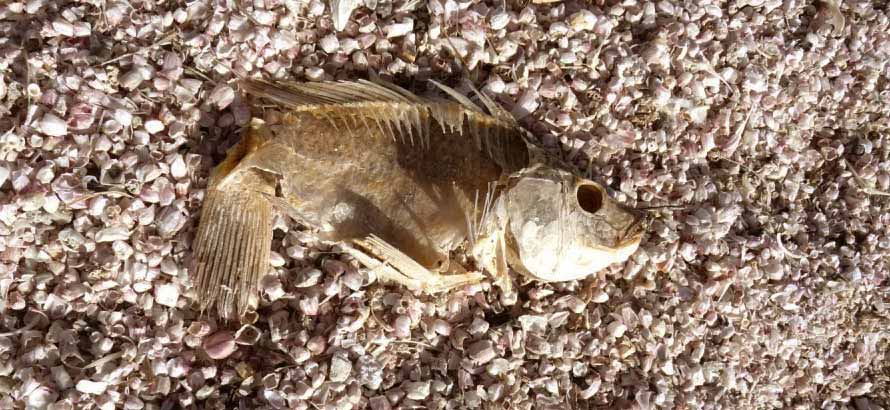 Dead fish on the shores of the Salton Sea in California. Photo by Céline Pallud
Dead fish on the shores of the Salton Sea in California. Photo by Céline Pallud
The Salton Sea is a shallow hypersaline lake located in the desert of southeastern California. The lake is maintained by runoff from agricultural irrigation, has no outlets and because of its location in an area of high evaporation, has been accumulating soluble salts and insoluble constituents in its bottom sediment for more than 100 years. Once one of the most productive ecosystems in North America, hosting 100 million fish, the Salton Sea is now impaired and Selenium (Se) is one of the constituents that threaten its health.
The Pallud Research Group is currently investigating the controls on selenium fate and mobility in the Salton Sea in response to environmental changes, more specifically to increasing salinity. For that purpose, they are determining potential rates and kinetics of selenium reduction and oxidation and phylogenetic microbial diversity in littoral sediments of the Salton Sea in response to a salinity gradient. The mechanism-based nature of the experimental work, combined with reactive transport modeling, will provide a sound basis for the management of the Salton Sea, and more generally of ecosystems contaminated by selenium.
For more information, visit the Pallud Lab website.
